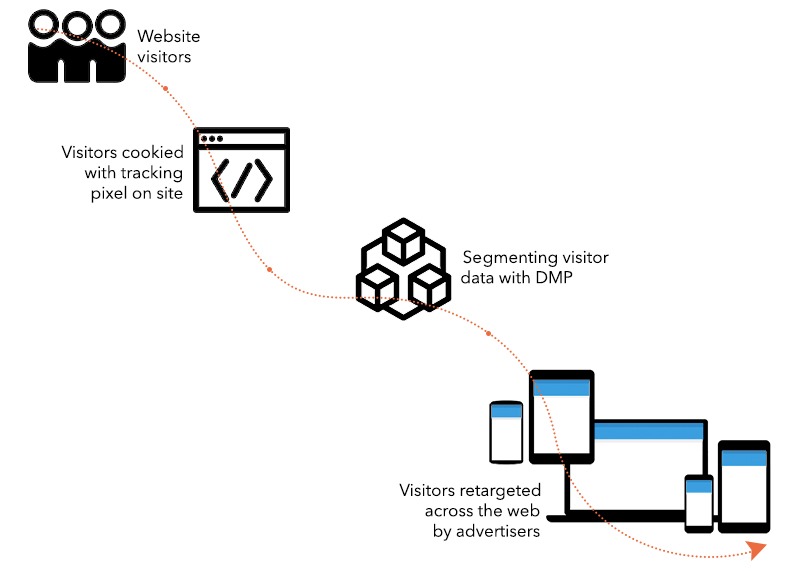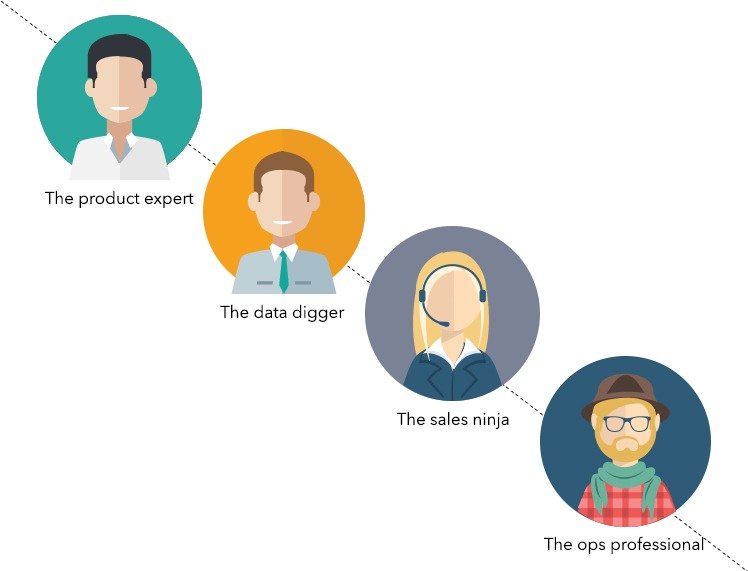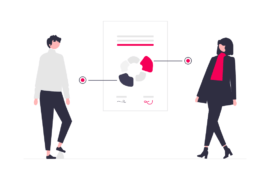Audience extension empowers publishers to monetize traffic. The working, use cases, audience extension in numbers, and everything else explained.
I can confidently say, publishers who are not using audience extension today, are probably leaving money on the table. Just like publishers experiment with N number of optimization techniques, advertisers are also seeking ways to make more revenue. Audience extension is one of the methods where publishers empower advertisers (and themselves) to earn more. How? Let’s talk data.
25% online buyers like behaviorally retargeted ads as the ads reminded them of what they were looking at previously. Retargeting is proven to boost the performance of display ads by up to 61%. Nearly 75% users know they’re being retargeted across websites.
Now, how would this data around retargeting make any difference to you as a publisher? Answer一audience extension.
In this post, I will explain what audience extension is and how you, as a publisher, have been missing out on additional revenue by not using audience extension.
What is Audience Extension?
Audience extension means the extension of your (the publisher’s) audience, i.e., website traffic to advertisers, without necessarily offering them your ad inventory. Of course, the logic is the offered audience has to be targeted enough and be valuable to advertisers.
For instance, let’s say you are a publisher in the education niche and receive decent traffic from boys and girls of ages between 17 to 25 from Latin America. Consequently, your traffic would be valuable to an advertiser looking to run ads for pitching degree courses and vocational programmes to people in that demographic.
Similarly, once granted, your traffic becomes an advertiser’s audience, on which he/she can run retargeting ads elsewhere to achieve their goal, e.g., click, download, or conversion. Simply put, audience extension allows you to package and ship high-intent audience for advertisers.
What’s in it for Publishers and Advertisers?
Audience Extension For Publishers: Advertisers are always trying to reach a more targeted audience which drives more conversion and drives better ROI. Hence for you as a publisher, audience extension helps monetize your own traffic while satisfying advertiser demand.
A trick? You can first retarget your traffic/audience to identify a lookalike audience. Second, you can offer the same audience to advertisers as they’re always looking for targeted audiences. As mentioned above, there’s no compulsion to also involve the sale of ad inventory.
This is a method that publishers can use to create a new channel of revenue. On a broader level, this may even help maintain an ad-free or maybe a less-ad-filled website. Though that is up to you.
Audience extension for advertisers: Having access to a targeted audience helps advertisers expand their online reach. Hence for advertisers, audience extension helps reach a readymade audience, which lies in their interest.
Furthermore, when advertisers are happy with the demographics and conversion quality of a publisher’s site, they see the benefit of running more ads on that audience all across the web; instead of bombarding just the publisher’s website with ads.
Since the audience is high-intent, there’s a better opportunity to combat banner blindness by running behaviorally targeted ads. This is another reason why advertisers pay premium revenue to publishers in exchange for their audience.
How Audience Extension Works: Cookies + DMP

Because audience extension is related to retargeting, it uses the same cookie technology to function. Cookies are small pieces of data stored on a user’s computer sent by the website, while the user is browsing. Later, these cookies are used to track user activities all over the web.
What you’ll have to do is fix tracking pixels in your website footer and start tracking the visitors. In this case, these cookies, after a certain interval, will create a set of audience which you can later use to offer to advertisers.
From this moment, the visitors who are being tracked using cookies will be able to view the ads shown by the advertisers across the web. At the point when the audience reaches a certain size, a DMP aka data management platform is likely to enter the picture and help you bundle and offer a specific set of audience to advertisers.
While cookies help you keep adding to the audience, DMPs help package it together. How? Using the audience segmentation feature, you can classify the traffic into different groups based on demographics, pageviews, session duration, and other parameters.
Using Audience Extension: Four Steps To Execution

Audience extension is usually a multi-department project. And if you have the right team in place, it becomes easier. Here’s what (and who) you need to successfully implement audience extension:
- A product expert:
To start, you need a person who can help build the project from ground and drive everything from planning to execution.
- A data digger:
A person who breathes and mines data (primarily inside your DMP), and can decipher which set of audience is or isn’t valuable to advertisers.
- A sales ninja:
You need this person to form the right liaisons, negotiate, and to ensure your audience extension project thrives in market.
- An ops professional:
This person will be responsible for pulling everything together while understanding audience extension, programmatic, and valuable insights in data sets.
Going forward, take note that you’ll need to deal with things like continuous product development, marketing, training, yield management and pricing, and others.
Audience Extension Case Studies
Audience extension is not a new technique. It’s been around for a while and has been delivering good results for publishers in terms of uplifting existing revenue.
1. Audience extension and programmatic revenue
- Gist: The Economist plans to grow its overall programmatic revenue in 2014.
- Goal: To drive above 50% programmatic revenue from audience extension campaigns.
- Result: Programmatic revenue uplifted by 200%.
2. Audience extension and lookalike audience
- Gist: A media company plans to win back clients and uplift ad revenue.
- Goal: To increase ad revenue by serving targeted ads to lookalike audience using audience extension.
- Result: Ad revenue increased by $1M in six months.
Clearly, it has been deployed for varied use cases. The above mentioned goals and the results incurred with audience extension speak their tale of success
The Audience Extension Advantage For Publishers
- First things first, publishers can monetize their traffic without selling ads.
- It can help publishers bundle and sell their traffic away from their websites using first-party cookie data.
- Behaviorally targeted ads help reduce the effects of banner blindness for advertisers and publishers.
- Opens up a new channel of revenue for publishers who either have their inventory sold-out or do not wish to run ads.
Key Takeaways
A Rubicon report from 2012 found 21% of the total publishers who were once surveyed were leveraging audience extension. In addition, 35% more were planning to take the same route.
Another point to note is, publishersーinstead of buying-selling of impressions on their own site all the timeーcan engage in buying-selling traffic/audience from whom impressions are likely to come’ in lieu of actual ad impressions.
Lastly, in the long run, publishers can find themselves in a state of the building and nurturing their relationship with buyers. Moreover, publishers with first-party data (website traffic, subscribers) are better positioned to utilize audience extension.
FAQs
Extending an audience by purchasing additional uniques or similar audiences from an outside source increases the reach (size) of a particular campaign. Profiles of users are matched against audience definitions.
By creating a custom audience on Facebook Business Extension (FBE), businesses can optimize their ad targeting by focusing on their customers, website visitors, mobile app users, or people similar to them.
You may see a phone number or links to additional pages on a website. Ad extensions are these extra features. PPC experts highly recommend them for good reason. According to Google, ad extensions can increase click-through rates by 10-15%.

Shubham is a digital marketer with rich experience working in the advertisement technology industry. He has vast experience in the programmatic industry, driving business strategy and scaling functions including but not limited to growth and marketing, Operations, process optimization, and Sales.







